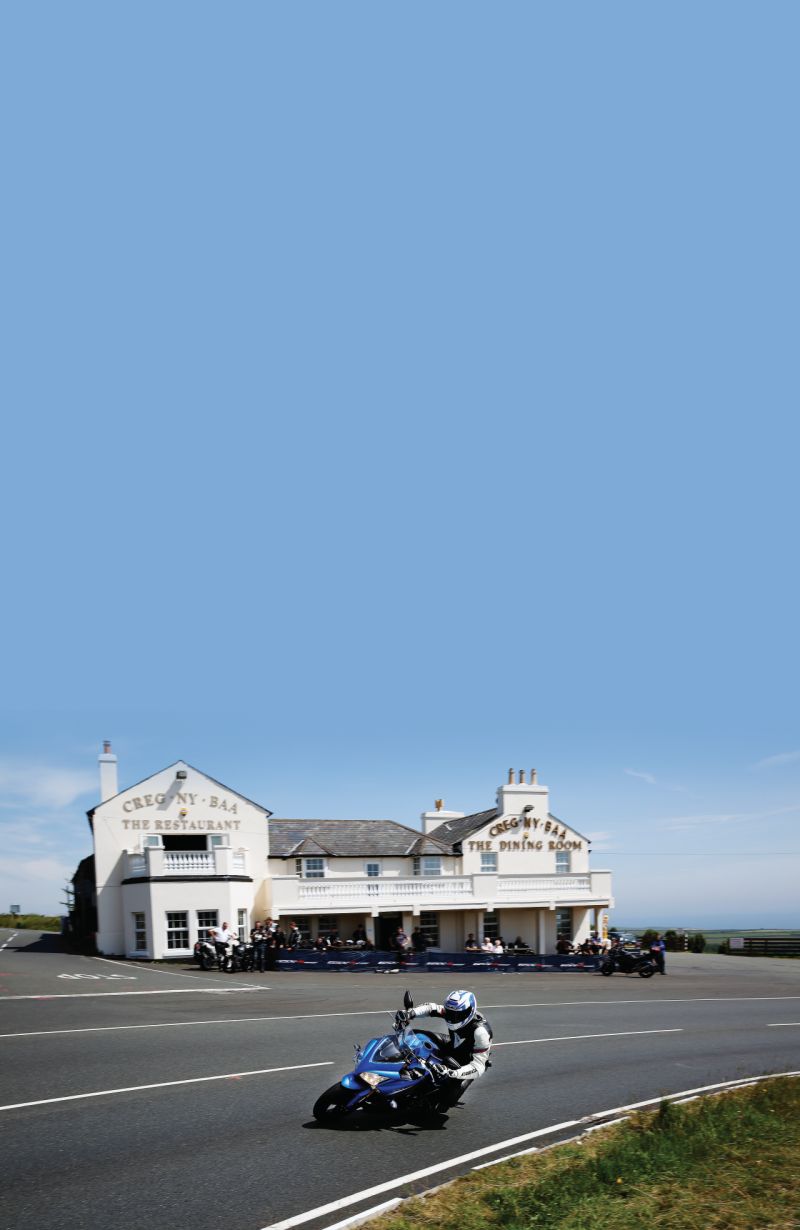There was still a slightly snatchy feeling when winding back the throttle in the lower gears, most noticeable when I later came back down through the Gooseneck the “wrong” way, and the bike accelerated through the downhill left-hander with a distinct lurch. At low revs in town the Suzuki was reluctant to hold a steady speed, repeatedly pulling forward and then hesitating. But most of the time the GSX-S fuelled sufficiently cleanly that I wasn’t aware of the issue. And the bike certainly had a respectably generous amount of mid-range torque that helped make it as easy to ride as it was fast.
As soon as we reached a de-restricted sign – which on the Island means no speed limit at all – Milky was off and I was caning the GSX-S to keep up; sometimes making use of the meaty midrange from 4-7,000 RPM, but mostly revving it harder, towards the 11,500-RPM redline. This bike might not match the top-end of a GSX-R but it was still seriously quick, kicking harder at about 10 grand, staying pleasantly smooth the whole time, and charging towards a top speed of about 250 km/h. Away from the Island I’d have been more interested to learn that those new mirrors work very well.
Like the naked GSX-S the F-model sounded good, too; a pleasant burble from the stubby pipe at low revs, hardening to a proper sports-bike scream as the neat and comprehensive instrument panel’s digital tacho bar flicked across the dial, while I flicked through the typically sweet-shifting box. The big difference this time round was that the small screen was there to help, diverting just enough wind to make three-figure speeds possible without too much neck-strain, and also without generating noisy turbulence in the process.
On a cold day you’d really want more protection, including some for the hands, but with the Manx weather on fine form the 1000F struck just the right balance by giving a sense of speed without leaving me too wind-blown. Its fairing and screen generate some useful downforce, too, which doubtless contributed to the bike’s impressive stability when we reached that Mountain road and the pace really hotted up. Even with the throttle wound open at over 200 km/h the bike barely twitched, confirming that Suzuki got their sums right with the steering geometry which, with an unchanged 25 degrees of rake and 100 mm of trail, is slightly less racy than the GSX-R’s.
The bike steered very well, too; that wide handlebar giving heaps of leverage that meant it could be flicked into turns with minimal effort. There was plenty of ground clearance, despite the lower pegs, and the Dunlop D241 tyres did a good job of making use of it. As with the naked model there’s a traction control system, quickly adjustable through three settings via a button on the left bar. On the Island the Suzuki was such fun for an occasional wheelie, especially over the dip between Kate’s Cottage and Creg-ny-Baa, that I sometimes left the system turned off. But on its least intrusive setting the TC worked sufficiently seamlessly that I wasn’t aware of it in normal riding.



Leave a Reply